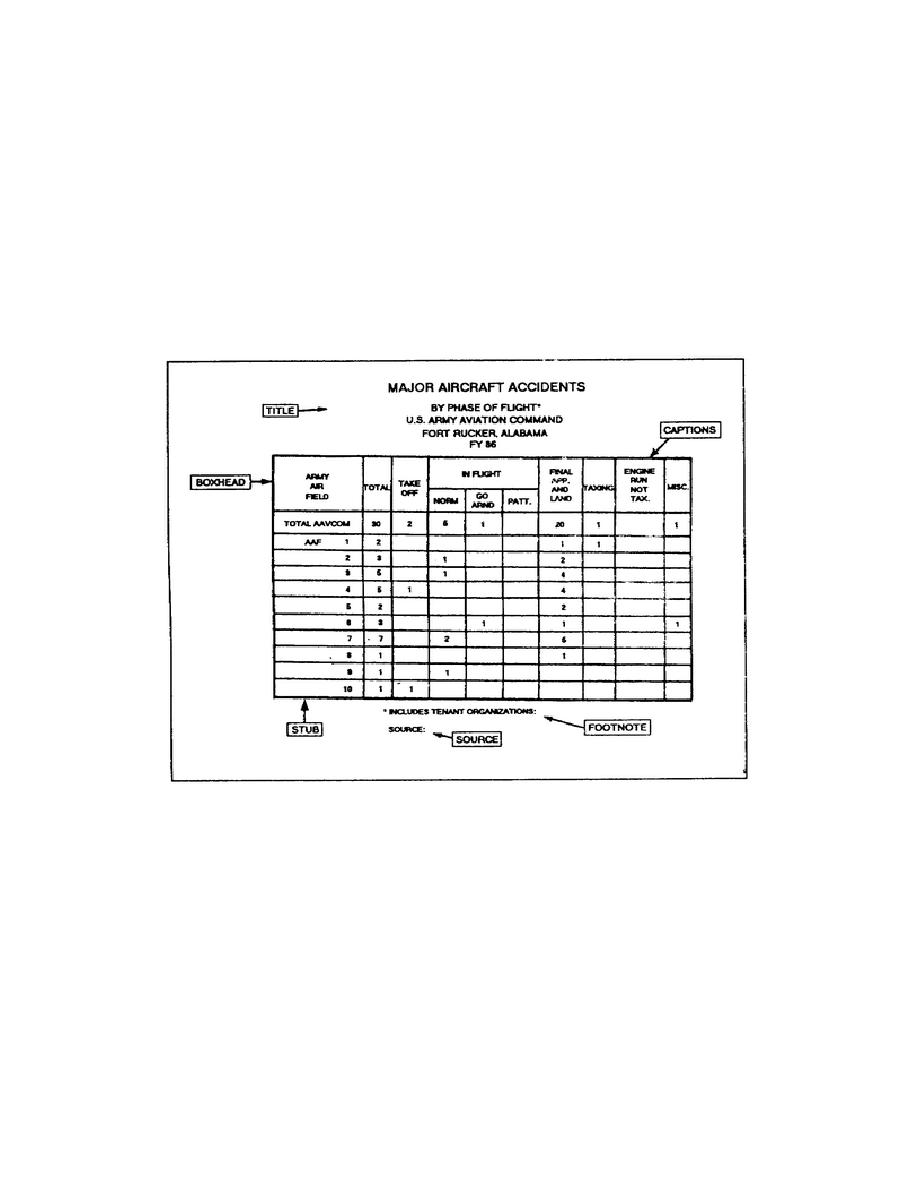
a. Different Types of Tables.
There are two different types of
tables used to present statistical data: general-purpose and special-
purpose. You can use either type of table to supplement charts, graphs,
and text presenting difficult or complex data.
(1) General-purpose table (figure 1-54).
This type of table
presents a wide range of data on a specific subject, and is not the type
of table requiring viewers to read the entire table to understand the
data it presents. When designing a general-purpose table, you arrange
the data so the reader can readily find the different data entries.
Think of a general-purpose table as a "figure file" where the reader
finds data using the same procedures used when finding a word in a
dictionary.
Figure 1-54.
General-purpose table
(2) Special-purpose table (figure 1-55). A special-purpose table
shows selected data arranged to focus the reader's attention on important
comparisons and relationships.
For the reader to understand the data
presented in this type of table, they must read the entire table.
Usually you find this type of table with text and used as part of a
summary.
b. Constructing a Table.
To prepare a table, you start with the
sketch or details on the VI work order and draw a rough draft of the
table. Keep refining the rough draft until you
1-59
SS0530



 Previous Page
Previous Page
